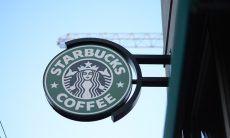Last week, a friend and former client, Leszek Adamczyk, President of an innovative environmental software firm in Poland (Atmoterm), sent me an enlightening article on how younger people in Europe are becoming more engaged in the “circular economy” model and adding fresh ideas for its growth. This article and additional research revealed three interesting insights that are relevant for all marketers. First, the importance of recognizing key global trends and their potential impact on society and business. Second, how the driving force from Millennials for a more sustainable environmental system represents an extraordinary opportunity to connect with them. And finally, how brand positioning principles can be applied to this circular economy model, like so many other worthwhile programs, to achieve broader adaptation and ensure its true benefits are delivered to society.
Millennials, the first digital generation, are very different from other market segments. Baby Boomers were accustomed to capitalizing on economic opportunities through consumption, investment, and competition, all bent on growth at any cost. However, Millennials are growing up in a world that is embarrassingly unequal, polluted, running out of resources, and with leadership they don’t trust.
The concept of a circular economy is not new, although it’s rapidly gaining in acceptance and respect today. The idea of circular material flows as a model for the economy was first presented in 1966 by Kenneth Boulding in his paper, “The Economy of the Coming Spaceship Earth.” China added this in its five-year plan in 2006, and the EU Commission created a manifesto in 2012, based on a report from McKinsey on the economic and business opportunities from this restorative, circular model, which concluded that: “In a world with growing pressures on resources and the environment, the EU has no choice but to go for the transition to a resource-efficient and ultimately regenerative circular economy.”
So what exactly is “circular economy”? Wikipedia defines it as “a generic term for an industrial economy that is, by design or intention, restorative …and in which material flows are designed to either reenter the biosphere or circulate at high quality without entering the biosphere”. The goal is to generate more value and economic opportunity with less material and energy consumption (the rise of the “shared economy” with examples like Uber and Airbnb contribute to this). In other words, a circular economy is all about closing resource loops. Currently we extract resources at an ever increasing pace, and turn them into a product which is ultimately disposed. However, this approach is unsustainable on a global level. Instead, we need an economic system that is waste free and resilient in design to restore our ecosystems.
There are six principles that are essential for a successful circular economy (source: “Circle Economy,” a membership organization in The Netherlands):
1. Materials – All materials are cycled infinitely
2. Energy – All energy is derived from renewable or otherwise sustainable sources
3. Ecosystem – Human activities support ecosystems and the rebuilding of natural capital
4. Value – Resources are used to generate value – financial and other forms
5. Health – Human activities support human health and activities
6. Society – Human activities support a healthy and cohesive society and culture.
It is primarily this last principle that excites and drives the passions of Millennials. In the U.S., 7 of 10 Millennials consider themselves “social activists”, and 3 of 4 believe corporations should create economic value for society. In particular, they view this circular economy model as a springboard for inspiring social good. Consistent with their strong passion to become entrepreneurs (54% want to start their own business, or have already started one), they see this sustainability model as an opportunity to take charge of their lives by being creative, innovative and resourceful, and to also be disruptive and empowered to build something on their own. Their ideas reflect a sense of utopian idealism designed to build a cleaner, less wasteful culture, with examples like:
• Hyper-local food chains where nutrients from organic wastes are upcycled back.
• Growing mushrooms from locally sourced coffee waste grounds
• Zero-packaging supermarkets, urban farming, litter picking and innovative tax reforms
At the same time, many Millennials are suspicious of corporations that push “save the world” initiatives. Many such messages are too obviously tied to the condition of buying their products, and Millennials simply don’t trust the vested interests of most corporate managers, politicians, or business groups. Instead, they seek DIY opportunities where they can actually own and develop their creative ideas and output.
The challenge (or opportunity) for companies and other supporters of the circular economy model is how to transform this movement into a vibrant brand that will excite and motivate people and ensure wider acceptance. While the principles behind branding are usually associated with products or companies, they can also apply to an environmental system like this. The most important element of branding is to identify and connect with your target customers and their emotional “sweet spot” desires.
With Millennials, their emerging passion for social value benefits is already extraordinarily distinct and powerful. The key is to position the circular economy brand so that its promises are credible, trusted, and genuinely engaging, especially for the high potential “brand enthusiasts” from this Generation Y. This means recognizing and respecting their idealistic creativity, not for commercial purposes, but to really support their desire to re-build local communities and disruptive, sustainable systems. (See our website for other ways to brand new programs tied to these societal opportunities.)



